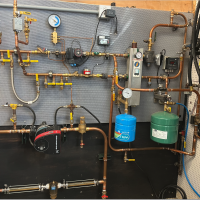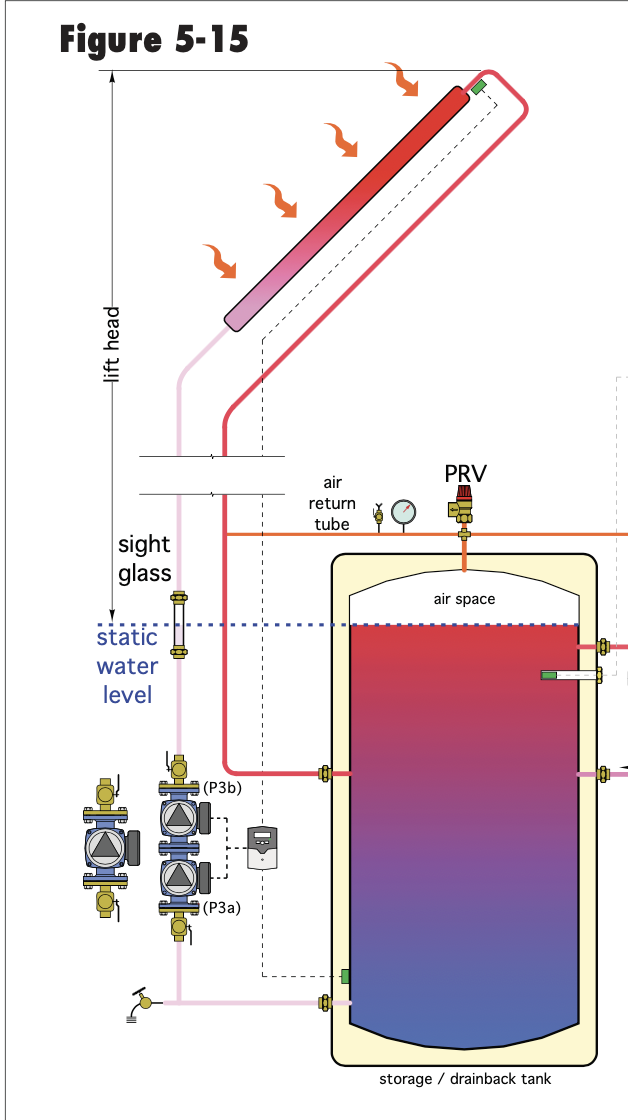Circulator or pump?
20 year old two zone radiant in floor system
Taco pump on each zone
Hot water supplied for electric tank
Replacing one of the taco pumps. Do I need a new pump or will a circulator work as well?
Comments
-
You already have circulators, and will replace with another
0 -
anything on a closed loop hydronic system is a circulator, we just call them pumps sometimes but the correct term is circulator because they do not pump, they circulate
0 -
Should I stick with Taco or look at something else? This is in the bedroom zone and only runs when the temperature gets very cold. I think it ran less than 20 hours last year.
Recommendations welcome.
0 -
it's typically easiest to replace like for like, taco has replaceable internals that can be cheaper than a whole new pump, either way worst case if you change the whole motor with like for like you just take the old motor off the volute and replace, no need to swap the body unless its leaking. I think most would probably agree for residential circs Taco, Grundfos, Wilo are typically considered in the same realm as being good products. Taco and Grundfos are definitely the most common in my area, can pretty much guarantee local wholesalers all have the 2-3 common models on the shelf. I like Wilo as well they just aren't stocked in my area.
1 -
A circulator is a specific type of pump designed for use in closed-loop systems, primarily for moving fluids like water in hydronic heating, cooling, or hot water recirculation systems. While technically a pump, a circulator is specialized for low-pressure, high-flow applications where the primary goal is to maintain continuous fluid movement rather than to lift fluid against gravity or generate high pressure. Unlike general-purpose pumps that may need to overcome significant static head (elevation changes), circulators operate within a pressurized system where the fluid is already at the required elevation, so they only need to overcome friction losses in the piping. this means that you already have Taco circulator pumps that circulate water in a closed system. All circulators are pumps, however, not all pumps are circulators. here are some pumps that do not circulate and can develop much higher pressure than a circulator:
As far as changing an existing circulator pump on your system, you are often better off replacing like for like as @GGross mentioned unless someone specified an incorrect circulator pump for your needs. This does not seem to be the case here. I have often found that you can purchase a new circulator pump of the same model number, and just replace the motor housing and impeller cartridge without needing to take the pump casing off of the connected piping. This saves time and labor hours.
Edward Young Retired
After you make that expensive repair and you still have the same problem, What will you check next?
2 -
A few thoughts, I agree circulator pump is the best description.
A DHW recirc pump morphs between a closed and open loop to some extent.
A circulator used on solar drainback starts out as a "lift" circulator pump. Able to lift water to whatever the head capability. So "lift head" as opposed to head.
I think any pump could be used as a circulator? It's pump curve would indicate it abilities
Head - the mechanical energy contained in a fluid
Bob "hot rod" Rohr
trainer for Caleffi NA
Living the hydronic dream1 -
technically the pump at a gas station is down under ground inside the tank and the thing you see is just a meter and valve.
0 -
they’re all pumps, centrifugal pumps which you have are considered variable torque. Term circulator is used when constantly circulating within a closed loop. If your pump is 20 years old, and thinking about replacing it, try the 007e, ECM technology which is more efficient than you PSC type pump. By 2028 that’s all mfg of pumps can sell as part of DOE new min efficiency. Standard. There might be rebates available in your area too.
you can call Taco tech support at 401-942-8000 for questions too.Joe Mattiello
N. E. Regional Manger, Commercial Products
Taco Comfort Solutions0 -
"Circulator" is a specialty term; I have never seen it outside the heating industry. But no matter — within the trade, everyone (pretty much!) knows what you are talking about!
I have never seen a "circulator" which wasn't a centrifugal pump — which doesn't mean they don't exist, thought I have never run into one. Like all centrifugals, they will have a characteristic pump curve which relates the pressure difference devloped across the pump to the flow through the pump, and these curves can be quite different for different models. It's necessary to be at least vaguely aware of this in choosing a particular pump.
Now where things get slightly flaky is that that curve is determined at a specific rpm. When you change the rpm, the curve moves — and this is why critters like ECM pumps can be used for a wide variety of applications, and how delta T or delta P pumps are controlled. They are all still centrifugals, but the motor rpm is changed as needed.
Back in the bad old days we did the same sort of thing with throttling valves on the output — but that wastes energy (sometimes a lot of it!), since it is quite difficult to change the rpm of a typical small to medium AC motor — and since physically commutated motors (sometimes for the old timers referred to as "universal motors" since they run equally well on AC or DC current) (which are easy to change the speed on) are a maintenance nightmare.
Br. Jamie, osb
Building superintendent/caretaker, 7200 sq. ft. historic house museum with dependencies in New England0 -
There are all pumps to me.
Call them circulators if you like.
But go into a hospital or large commercial building they are all closed loops (except maybe a water tower) and you have "pumps" that are 20, 30, 40hp or more and no one calls any of those circulators.
Circulators are residential to me, but they are still pumps.
0 -
-
Thanks, everyone. Lots of good info.
0 -
because they were trying to sell you a 3 piece circulator to put on your gravity system that probably didn't really need it.
0 -
"Circulator" — or sometimes "recirculator" — is used for domestic hot water too. I'll leave it up for discussion whether that is part of the heating industry.
0
Categories
- All Categories
- 87.3K THE MAIN WALL
- 3.2K A-C, Heat Pumps & Refrigeration
- 61 Biomass
- 428 Carbon Monoxide Awareness
- 120 Chimneys & Flues
- 2.1K Domestic Hot Water
- 5.8K Gas Heating
- 114 Geothermal
- 166 Indoor-Air Quality
- 3.7K Oil Heating
- 77 Pipe Deterioration
- 1K Plumbing
- 6.5K Radiant Heating
- 395 Solar
- 15.7K Strictly Steam
- 3.4K Thermostats and Controls
- 56 Water Quality
- 51 Industry Classes
- 50 Job Opportunities
- 18 Recall Announcements







